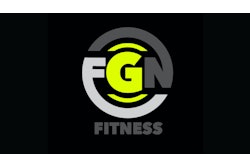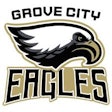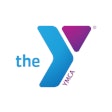Using email and the Internet to communicate with members and prospects can help you to grow your business.
Fitness professionals are in the business of bodies. You use your muscles, sweat and voices to shape other people's bodies, and your own business. The computer is for checking email and balancing the budget. As far as the Internet, you may have a website, but that's all you need, right? The fact is, most fitness professionals could do more to effectively meet, service and retain members using online tools.
From blog postings to keep clients or class participants informed, to customized websites where members log in to track progress, the Internet is helping fitness professionals do more with their business. Here are some tips for improving your virtual communications. Try a few and see if they make a difference for your members and your facility.
Email: The Essential Building Block
If you are not already collecting email addresses from members and potential members, you should be. Even if you are not using email to communicate with members now, you may want to later on, and this list will be a lot harder to get after people are already signed up. Even for people who don't become members, get their email addresses whenever you can, and log them in to whatever software you use to track members and prospects.Email can be used to communicate with individuals, particular segments of your facility's membership or en mass.
Individuals. Personal trainers can keep clients motivated between workouts using email. This can be as simple as a quick note saying, "Great job today. I'll see you on ... for your next appointment."
Savvy trainers log workouts using spreadsheets or fitness tracking software. Some programs allow one person to manage accounts for multiple clients, and others can be used on a mobile device, like a PDA.
When workouts are tracked, the information can be emailed to members later. Clients appreciate having a record of everything they did with their trainer, plus, it adds value to the personal training experience. To take this idea one step further, trainers can send workout summaries and updates weekly or monthly using the information they have collected. Clients will see their progress charted out for them, and feel more motivated to keep going.
Groups. Email is a cheap and effective tool for communicating with groups. A group might be your entire member list, or it might be a sub-set, like members who are coming up for renewal. When emailing a group, you can upload your list to an email marketing provider to avoid being tagged as a "spammer." The cost for most email marketing is around $.012 per email.
Start A Blog Or Social Networking Page
Even if you don't use the Internet at all, your potential customers do. To help them make an educated decision about your facility, be sure your business has a page on Wikipedia.com. Wikipedia is an online encyclopedia where you can find information on anything and everything. The pages are started by users, and other users can add information. This has become a popular tool with a wide user base.Social networking profiles, such as a MySpace or FaceBook page, are easy to start and even easier to maintain, and they put you on the Internet map. These sites are valuable tools with millions of subscribers, and many businesses are getting great exposure using them. Your business should have a profile page in both MySpace and FaceBook. It's just one more tool to help your members find you.
Another option is a blog. A blog is an online journal that, in this case, logs your fitness business activities. The word "blog" is an abridgment of the term "web log." You can start and maintain a blog free on various hosting sites, such as Blogger and Live Journal (for a list of more than 40 free blog hosting sites, visit https://mashable.com/archive/free-blog-hosts). To start a blog, go to the hosting site and follow the instructions. Make sure you fill in the description and other fields using words that a potential customer would use to find you when using an Internet search engine (i.e., health club, fitness center, exercise, workout, gym, personal trainer).
You can allow visitors to comment on your blog or not. Comments can be moderated or unmoderated, depending on your preference. Spammers have found ways to infiltrate the comments section of blogs, so allowing comments only after they are approved by an administrator (you) is a good idea.
Blog as often as possible on a variety of topics. You will be surprised at the blog posts that generate the most attention. The more often you blog, the more people will read it. And, a reader of your blog is a potential member.
Email Newsletters
Research shows that 47 percent of consumers like to receive online newsletters from retailers they have a chosen relationship with. Email marketing via newsletters builds relationships. This can especially be true in fitness, where some potential customers may be hesitant to take the first step toward their health goals.For your e-newsletter, you might create an email group of prospects who have not yet signed up. An email newsletter may serve as the reliable, friendly nudge they need to take that first step. You might create another group that consists of all of your members. Sending this group a monthly or bi-weekly newsletter containing quality fitness information and event reminders is a service they will appreciate.
Here's how to start an email newsletter:
- Go to an email marketing site, such as www.verticalresponse.com.
- Sign up for an account.
- Fill your e-newsletter with relevant, interesting health, fitness and exercise information, plus upcoming events, your group exercise schedule, new hires, and member and/or staff profiles. Be sure to include all relevant contact information and facility hours of operation.
- Email your newsletter to everyone in your address book.
WebsitesFitness trackingEvenFit (www.evenfit.com) OpenFitness (www.workoutware.com) Email marketing Vertical Response (www.verticalresponse.com) Information Wikipedia (www.wikipedia.com) Blogging Blogger (www.blogger.com) WordPress (www.wordpress.com) Live Journal (www.livejournal.com) DIY website service Bigger, Smarter Designs (www.biggersmarterdesigns.com) |
||
Virtual Coaching And Memberships
Some fitness centers are going further than just using email and the Internet to market their services. Some are actually generating revenue online using virtual coaching services and virtual memberships. At first glance, this is an odd concept. How can a fitness business possibly make money without hands-on interaction?Virtual coaching. Virtual coaching is the idea that an individual or a small group is assigned a "virtual coach" in the same way that they might be assigned a personal trainer. The coach is their guide and advocate, providing written workouts, information and encouragement.
Virtual memberships. A virtual membership involves offering a special section of your website that is filled with information and tools. Here is how it might work for you:
- Write some articles for your website or blog. They can be on any fitness topic: nutrition, weight lifting, new cardio workouts, choosing the right group class, etc.
- Set a goal to post a new article every week for three months. This will put you on the road to having a nice library of information.
- Supplement this library with free articles from article services like www.findarticles.com or www.physicalfitnessarticles.net.
- Send an invitation via group email or e-newsletter each week linking to the new content in your website or blog.
- Track the popularity of this section.
Many of the tools you would need to implement a virtual coaching program or a virtual membership section can be developed without a programmer by using a do-it-yourself website service.
Is It Worth The Effort?
The keys to using online communications to successfully serve your business are goal setting and tracking. The goal for your online communication might be to simply give members information. Or, you may want to market and grow your business using online communication. You may want to generate revenue online. Write down your goals, as well as the steps you think you will need to take. This will keep you on track when things get a little hairy. There is so much information out there, it's easy to get sidetracked by the possibilities. Stay focused until you have achieved your initial goal.Track the number of visits you are getting each week with each online communication tool you are using. Most sites, such as Google Analytics (www.google.com/analytics), tell users how many people looked at the site, how long they stayed, how many pages they looked at, whether they have been there before and whether people are finding you in the search engines. That information provides a clear picture of what people are looking for when they visit your website. Based on this, you will know what kind of information to add to keep visitors coming back.
Online communication is a worthwhile service that will help you market your business and add value to your memberships. Get your feet wet with the tools you feel comfortable trying. It may not be long until you are ready to try more.




































